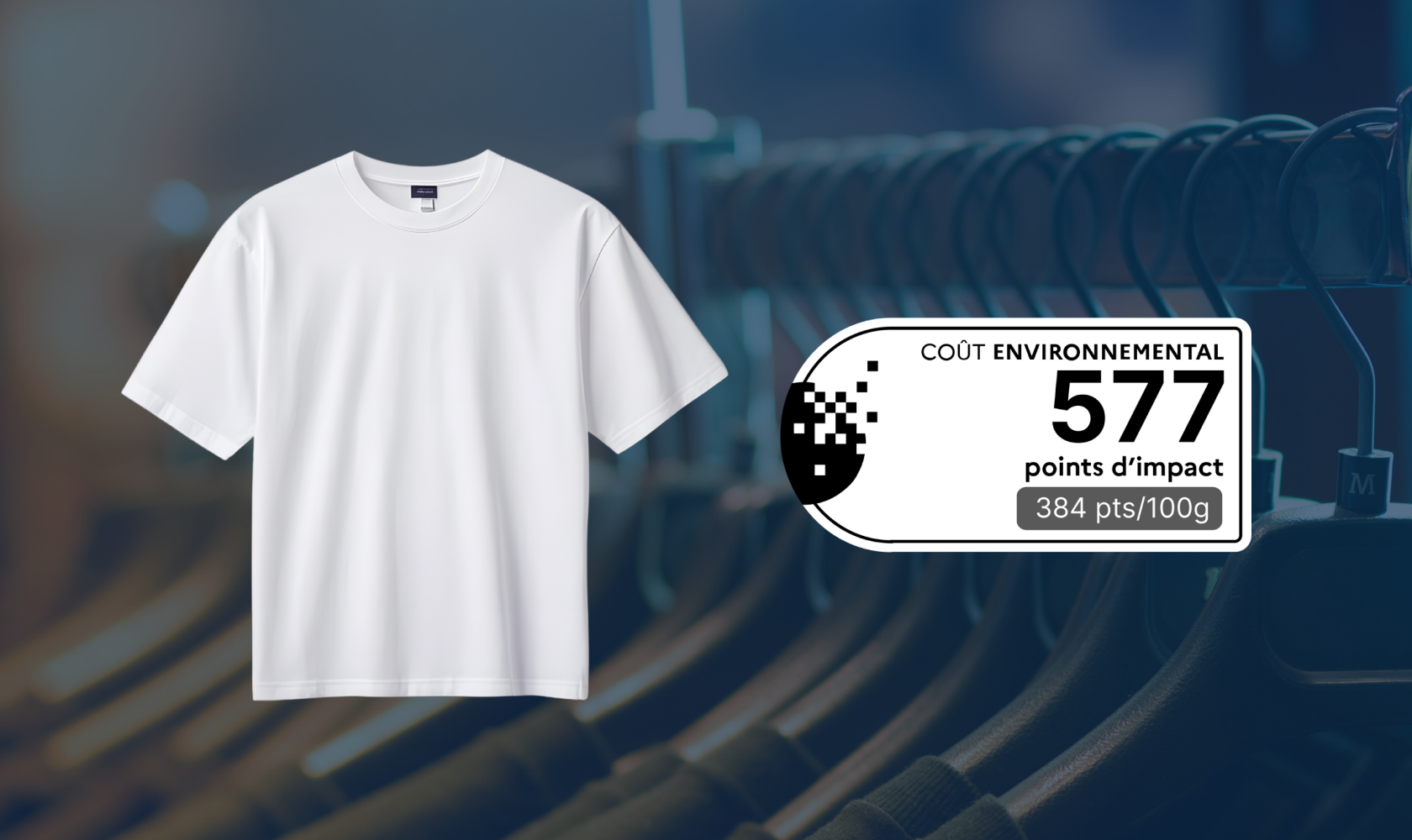Environmental costs: understanding the impact of your clothes
Since October 2025, the environmental cost appears on your clothes. A new label to help you understand the impact of your purchases and make more responsible choices.
Since October 2025, the environmental cost appears on your clothes. A new label to help you understand the impact of your purchases and make more responsible choices.

Since October 2025, a new piece of information has appeared on your clothing: the environmental cost.
This environmental display is a tool developed by the French Ministry for Ecological Transition, Biodiversity, Forestry, Sea and Fisheries and Ademe, made available to citizens to help them become aware of the environmental impact of their clothing, and enable them to make more responsible consumption choices.
Environmental cost is a number expressed in "impact points". This number can range from 0 to infinity, and represents all the environmental impacts generated throughout the garment's life cycle.
The principle is simple:
What is a product's life cycle?
The calculation of environmental costs is based on the methodology of product life-cycle analysis. It measures the environmental impact from the sourcing of raw materials, through the various stages of garment manufacture (weaving, manufacturing, finishing), transport and use by the consumer, right up to end-of-life as waste.
For example: the transport of a T-shirt accounts for between 2% and 15% of the impact, while the production of raw materials can account for between 25% and 55%, and the transformation stages (weaving, knitting, manufacturing, etc.) for between 20% and 35%.
On each label, you will find two pieces of information:
This second piece of information is particularly useful when comparing garments of different weights (for example, a t-shirt and a sweater).
.jpg)
Here are some concrete examples to help you get your bearings:
💡 Please note: A coat or jeans will naturally contain more material, and therefore a higher environmental cost than a t-shirt. This is normal! The important thing is to compare similar products.

You may be wondering why the score is in points and not a system of colors or letters like the food?
The reason is simple: the aim is to raise awareness of the fact that every purchase has an impact, even a garment with an "A" or green rating.
The aim is not to judge garments as "good" or "bad", but to provide consumers with clear, easy-to-read information to :

